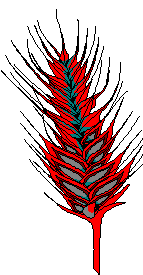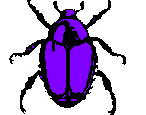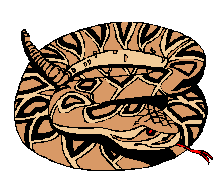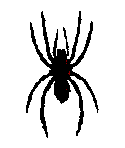|
|
|
SOME PLANTS, CHEMICALS, BEDDING, MEDICINES ARE POSSIBLY TOXIC TO YOUR MULE
|
| Toxic elements can endanger your mule's
life. Certain pastures, household chemicals, fertilizers,
antibiotics, even your bedding in the stall can prove fatal to your
valued equine. Substances around a normal farm can result in life
threatening situations range from ornamental plants, feed additives,
farm products, insecticides, pesticides, fertilizers, rodent baits
and mold. Generally, poisonings can be avoided by conscientious
management around the barn. Be familiar with lethal substances and
the symptoms of poisoning to protect your mule. An ounce of
prevention is desirable because in most instances there is no cure
for your poisoned mule.
INSECTICIDES RODENT POISONS
PLANTS Toxic plants can be found in pastures and as ornamentals around homes. These plants include common weeds and certain acceptable crops that accumulate high levels of toxins at certain times of the year. In addition, some ornamental plants such as oleanders, laurel, Japanese Yew, Red Maple trees and small trees like black cherry and black locust are poisonous. It is advisable to keep mules away from ornamentals around the house and limit landscaping around barns to plants you know are safe. S There is a great variation of toxicity of poisonous plants and the amount necessary to kill a mule will also vary. Some act quickly and some must be consumed for a lengthy period of time for the lethal levels to build up. Fescue grass can be toxic under certain conditions. Because it is capable of withstanding such environmental challenges as extreme drought, flooding, heavy traffic and poor soils, fescue is a popular grass to be used in pastures. Mares on infected fescue pastures and hay experience prolonged pregnancies, abortion, foaling problems, thickened placentas and stillbirths. Some did not produce milk for their new foals. Research indicates that it is a fungus that is the culprit, not fescue itself. You can test your fescue pasture to see if it is infected. If it is infected, all fescue plants can be killed by herbicides and seeded with certified fungus-free seed. Red Maple and Japanese Yews, both ornamentals used for landscaping, are frequent culprits in the poisoning of mules. They eat the fallen maple leaves which become more toxic the longer they dry out. Causing anemia, red blood cells are destroyed. Symptoms include depression, pale mucous membranes, rapid breathing and increased heart rate, with the eventual muscle tremors and possibly death. If the Japanese Yew is ingested the mule may be found dead without so much as a sign of distress or may show weakness, wobbling, muscle tremors, difficulty in breathing and convulsions. Locoweed, the plant so popular in the movies and cartoons, is indeed poisonous. Also known as milk vetch, it's a member of the legume family. An affected mule may wander aimlessly, drool or run into things in the severest cases. After recovery, brain damage may continue to plague the animal. Generally, an animal will avoid locoweed if there is other forage available, but it has been thought that once eaten it becomes habit forming. Removing the source or removing the mule from the pasture is the only treatment. Like larkspurs, lupines and water hemlock, and loco-weed poisoning affects the central nervous system. The mule may exhibit rapid breathing, muscular trembling, convulsions and possible death. Other poisonous plants that affect the mule this way are bracken fern, horsetail, milkweed and poison hemlock. They cause anorexia, depression, weakness, paralysis, incoordination and collapse. Other plants may cause gastrointestinal signs after ingestion. Oleander, rhododendron, ragweed and black locust can cause abdominal pain, weakness, diarrhea , fever and sweating. Laminitis may occur also. Sorghum grasses, which include milo and Sudan grass, can be toxic when used as pasture. Because the sorghum contain hydrocyanic acid which becomes cyanide while metabolized, they can be fatal when grazed. Mature stands are generally less toxic and hay might be questionable. Death can occur from the cyanide poison, but some animals develop a chronic condition know as sorghum-cystitis ataxia characterized by hind end incoordination and bladder paralysis. Ryegrass has been know to show toxic reactions, also. Under certain conditions, the mule trembles and bobs his head. This progressing to swaying and falling. There are many other plants and trees that can be harmful. It is best to consult your local agricultural department for help in identifying the culprits in your area and even your pasture. MOLDS Probably one of the most common forms of poisoning results from the mold in grain and hay. Humid weather or dampness provides the perfect growing climate for molds in the feed room. Grains that have been improperly stored and hay that has been stored wet can result in colic and digestive disturbances. Ergot and moldy corn poisoning is always severe. Ergot poisoning causes paralysis of the legs and tongue, colic and diarrhea. Moldy corn poisoning leaves the mule disoriented and confused, sometimes blind. BLISTER BEETLES Southern states and those receiving shipments of hay from them should be on the lookout for Blister Beetles. Sometimes, they are present in baled hay and can kill. They contain cantharidin, a highly toxic chemical. FEED ADDITIVES There are a number of feed additives that can be potentially dangerous to your mules. If you buy a feed formulated for cattle don't get any with the product Rumensin. Rumensin is highly toxic and can result in death to equine. Urea is not nearly as toxic and can be tolerated, but will cause depression of appetite if eaten in large quantities. Selenium, a mineral, in sufficient amounts can cause blind staggers and acute stage or severe debilitation in the chronic phase. It breaks down the hoof wall, mane and tail so chemical analysis of the hair and hooves identifies its presence. Sometimes, high nitrate levels will make a mule ill. Many vitamins and minerals are potentially toxic at excess levels, therefore, must be balanced in the feed to provide normal benefit. For example, vitamins are essential for the growth of a young animal, but excessive use can cause severe problems. It is best to purchase a good feed that is balanced properly for equine from a reputable mill.
A rarer problem is poisonous snake bite and stings from venomous insects. Snake bite generally is not fatal, but it can make the animal seriously ill. Depending on the location of the bite and the amount of venom injected, breathing can be impaired and the mule is in danger of suffocation. Some animals may be more allergic than others which means their reaction will be more dramatic to the snake bite. The severity of the bite depends on the amount of venom the snake injected and how hard he struck, whether it was a glancing blow or a hard chewing. INSECT STINGS Few stings are fatal to the mule. Bees, wasps, yellowjackets and the like generally do little harm other than give the rider a wild time. Only if an animal has an allergy or runs afoul of a large hive or group of hives could there be danger.
DRUGS & MEDICATIONS It is possible for mules to suffer toxic reactions to various drugs and medication. Anaphylactic shock, generally caused by formulations of penicillin and some immune serums, has a sudden onset and is critical. From a few skin hives to interference with breathing, the results vary in severity.
Black walnut wood shavings or sawdust can be toxic to mules and horses and can result in laminitis (founder). As little as 5% black walnut materials in bedding may cause the toxicity, as reported by Texas A&M University. According to their report, the equine have to eat the bedding containing the black walnut At the university, laminitis has been experimentally produced in horses by oral dosing with water extracts of black walnut heartwood, but direct skin contact did not. Mules should be just as susceptible as horses to Black walnut poisoning if bedding is ingested. Other sources feel that just standing on the black walnut shavings can allow the toxins to be absorbed through the soles of the feet. The best policy is to be sure that it is not present in your stall bedding.
WHAT TO DO? If you suspect poisoning - remain calm! Drape a cooler or blanket over the collapsed mule to keep him warm. Try to identify the toxic agent. If it is something he consumed, save a sample for testing and analysis. If you suspect deliberate poisoning keep the entire sample for the authorities. Remember to keep the label as this information may help you to treat the problem, especially if it is rodent bait. Call your vet and give him/her the symptoms, vital signs, and what you suspect poisoned the mule. The vet will give you instructions you should follow until he/she arrives. If you cannot contact a vet the University of Illinois operates a toxic hot line. Options available from the University can be found by contacting them at (217) 333-3611. If you find a mule dead for unexplained reasons, poisoning is generally the first consideration. It is usually accidental rather than deliberate, but there are instances where someone has done this intentionally. If you suspect that is the case contact the authorities. It may save some unsuspecting owner grief at the loss of their animal. Regardless, in an unexplained death, it is best to identify what happened in order to protect your other mules and farm animals. A field autopsy may reveal an obvious cause, but most often tissue samples must be sent to the lab to for analysis. The lab will need samples of plants or substances you suspect are the culprits. This can become expensive, so you have to decide how far you want to carry the investigation. Remember, too, that some incidents will always go unexplained since some toxins break down too quickly or the investigation gets to be too expensive. PREVENTION Prevention is always better than the cure, especially in the case of poison. Protect your animal from toxic substances so that you are not faced with the treatment and agony you mule may suffer. Better safe than sorry.
|


 Rodent baits,
commonly used to control the pests in the feed room, contain
strychnine, arsenic or warfarin. All of which cause death to the
rodents usually through internal bleeding. Their use and placement,
if not carefully supervised, can result in the contamination of feed
and water sources on the farm. In addition, the dead rodent or the
dying rodent may be ingested by an unsuspecting cat or dog. The
deadly poison is then transferred and can kill. In addition, rodent
baits generally consist of tainted grain which is highly attractive
to equine. Careful management of rodent baits is significant.
Rodent baits,
commonly used to control the pests in the feed room, contain
strychnine, arsenic or warfarin. All of which cause death to the
rodents usually through internal bleeding. Their use and placement,
if not carefully supervised, can result in the contamination of feed
and water sources on the farm. In addition, the dead rodent or the
dying rodent may be ingested by an unsuspecting cat or dog. The
deadly poison is then transferred and can kill. In addition, rodent
baits generally consist of tainted grain which is highly attractive
to equine. Careful management of rodent baits is significant. ummer and early
Fall are the times of year that the incidence of plant poisoning
generally occurs because pastures are sparse and when good grazing
is not available mules may turn to weeds and less palatable grasses.
Being mules, they sometimes seem to enjoy the lesser plants, too.
During periods of excess rain, drought or slow growth periods, mules
may forage on plants they might not normally eat. In pastures that
are overgrazed, mules may be forced to eat toxic plants. Pastures
where grass is plentiful seldom prove a threat. Very few of the
poisonous plants taste better than good grasses. Grazing mules can
usually avoid toxic plants in favor of the good grasses, but when
those plants are harvested with the hay it is more difficult to sift
through. Symptoms of plant poisoning include irritation of the
mouth, drooling heavily, paralysis of the tongue, diarrhea, high
pulse and panting labored breathing, a bluish tint of the mucous
membranes, convulsions and disorderly gaits. A mule can collapse and
die immediately without showing any symptoms whatsoever with some
types of plants.
ummer and early
Fall are the times of year that the incidence of plant poisoning
generally occurs because pastures are sparse and when good grazing
is not available mules may turn to weeds and less palatable grasses.
Being mules, they sometimes seem to enjoy the lesser plants, too.
During periods of excess rain, drought or slow growth periods, mules
may forage on plants they might not normally eat. In pastures that
are overgrazed, mules may be forced to eat toxic plants. Pastures
where grass is plentiful seldom prove a threat. Very few of the
poisonous plants taste better than good grasses. Grazing mules can
usually avoid toxic plants in favor of the good grasses, but when
those plants are harvested with the hay it is more difficult to sift
through. Symptoms of plant poisoning include irritation of the
mouth, drooling heavily, paralysis of the tongue, diarrhea, high
pulse and panting labored breathing, a bluish tint of the mucous
membranes, convulsions and disorderly gaits. A mule can collapse and
die immediately without showing any symptoms whatsoever with some
types of plants. 
 SNAKE
BITE
SNAKE
BITE
 BEDDING
BEDDING